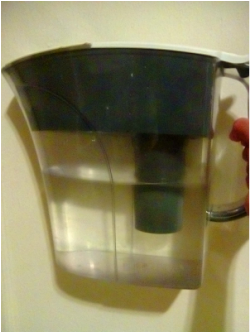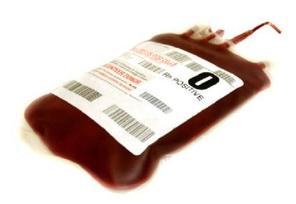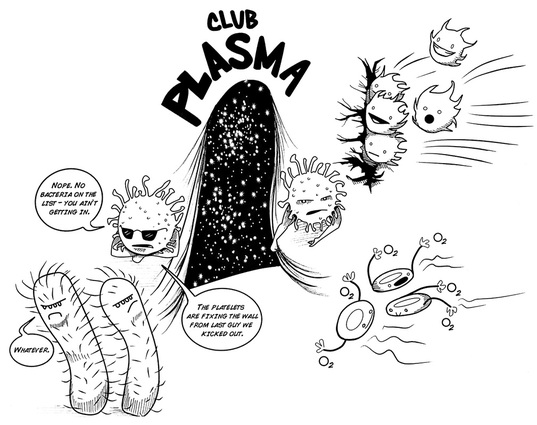I am sure you are questioning the image above seeing how todays blog is titled “Blood,” but it has a purpose. All I ask is that you keep this image in mind and try to figure out just how much it is and how it pertains to this blog. Now we are all acquainted with blood, it is the red liquid that keeps us alive. That said, how much does the average person really know about blood other than what I have already stated. In the following blog I will discuss what makes up blood along with other facts; what facts? Well, you will have to read the following to find out.
Before we get into what exactly is blood, I want to speak of just how much blood are we made of. The average amount of blood in a human is about one and a half gallons, which makes up approximately 7 percent of a person with the weight of 150 – 180 (although it slightly less in women because of the blood loss in their menstrual cycles). What is most interesting about this blood is that once children reach the ages of 5 or 6 they have the same amount of blood as adults; “But because children are smaller and their bones, muscles and organs don't weigh as much, their blood makes up a larger percentage of their body weight than it does in adults.”
Now that we have that out of the way, what is blood, as in what makes it up. Like the skull that is made up of many different bones, our blood is made up of different components. The ones that most people know of are the red and white blood cells it carries. The white blood cells are very important to everyone because these protect us from infectious diseases and foreign invaders. When we are sick, one of the reasons you feel so tired is because your white blood cells are busy fighting off what is making you sick. The red blood cells on the other hand need some “foreign” substance. This substance is oxygen. They carry this oxygen from the lungs to the rest of the body and takes the carbon dioxide from the body back to the lungs so it can be exhaled (and it is a little sad because the average red blood cell can only survive for 120 days).
As I said, many people know of the white and red blood cells, but along with them are two very important components. The first of which is plasma. Unlike the cells that are in the blood, we are able to see this with our naked eye. The plasma of the blood is a light yellow liquid that “transport nutrients, hormones, and proteins to the parts of the body that need it.” And it helps out the white blood cells because plasma contains antibodies. The last component blood has is vital when we get cut or have our skin broken, this component is known as platelets. These, unlike plasma, are tiny blood cells, smaller than both red and white blood cells (of which white are the biggest, red is bigger than platelets by a small margin). Platelets are the ones that spring into action to form clots to stop bleeding. “If one of your blood vessels gets damaged, it sends out signals that are picked up by platelets. The platelets then rush to the site of damage and form a plug, or clot, to repair the damage.”
There are those people who are diagnosed with hemophilia whose ability to clot is severely reduced. This brings me back to the image at the start of this blog. I am sure you thought I forgot all about it, but I wanted to save it for the end. The amount in the pitcher is half a gallon (2 liters) which is all you need to lose to die. The average human body has 1.2 to 1.5 gallons (4.7 to 5.5 liters) of blood. The image below is a pack of donated blood which is 1 pint or half a liter. Even after donating blood, you will not be able to donate again for about four to six weeks for your blood to recover. This is why you are given water (plasma is 92% water, which also makes sense that you would die from dehydration first than starvation) and food after donating. The amount you would have to lose to die is 4 times the amount in the image below...or just the amount of the image at the start of this blog.
Before we get into what exactly is blood, I want to speak of just how much blood are we made of. The average amount of blood in a human is about one and a half gallons, which makes up approximately 7 percent of a person with the weight of 150 – 180 (although it slightly less in women because of the blood loss in their menstrual cycles). What is most interesting about this blood is that once children reach the ages of 5 or 6 they have the same amount of blood as adults; “But because children are smaller and their bones, muscles and organs don't weigh as much, their blood makes up a larger percentage of their body weight than it does in adults.”
Now that we have that out of the way, what is blood, as in what makes it up. Like the skull that is made up of many different bones, our blood is made up of different components. The ones that most people know of are the red and white blood cells it carries. The white blood cells are very important to everyone because these protect us from infectious diseases and foreign invaders. When we are sick, one of the reasons you feel so tired is because your white blood cells are busy fighting off what is making you sick. The red blood cells on the other hand need some “foreign” substance. This substance is oxygen. They carry this oxygen from the lungs to the rest of the body and takes the carbon dioxide from the body back to the lungs so it can be exhaled (and it is a little sad because the average red blood cell can only survive for 120 days).
As I said, many people know of the white and red blood cells, but along with them are two very important components. The first of which is plasma. Unlike the cells that are in the blood, we are able to see this with our naked eye. The plasma of the blood is a light yellow liquid that “transport nutrients, hormones, and proteins to the parts of the body that need it.” And it helps out the white blood cells because plasma contains antibodies. The last component blood has is vital when we get cut or have our skin broken, this component is known as platelets. These, unlike plasma, are tiny blood cells, smaller than both red and white blood cells (of which white are the biggest, red is bigger than platelets by a small margin). Platelets are the ones that spring into action to form clots to stop bleeding. “If one of your blood vessels gets damaged, it sends out signals that are picked up by platelets. The platelets then rush to the site of damage and form a plug, or clot, to repair the damage.”
There are those people who are diagnosed with hemophilia whose ability to clot is severely reduced. This brings me back to the image at the start of this blog. I am sure you thought I forgot all about it, but I wanted to save it for the end. The amount in the pitcher is half a gallon (2 liters) which is all you need to lose to die. The average human body has 1.2 to 1.5 gallons (4.7 to 5.5 liters) of blood. The image below is a pack of donated blood which is 1 pint or half a liter. Even after donating blood, you will not be able to donate again for about four to six weeks for your blood to recover. This is why you are given water (plasma is 92% water, which also makes sense that you would die from dehydration first than starvation) and food after donating. The amount you would have to lose to die is 4 times the amount in the image below...or just the amount of the image at the start of this blog.
So with all that in mind, the blood network sounds like a well oiled machine. Does what it needs to do when it needs to do it. Without even one of these components...I do not see us surviving for the long run. The white blood cells keep us healthy, the plasma keeps us nourished, the platelets keep us from running dry, and the red keep us breathing. Sure you have all of the organs to help keep us alive, but without blood...we would be dead.
Please feel free to comment on what you thought of the blog, or other physical anthropological subjects you would like me to cover. Below is a cute comic that I think accurately illustrates how the different components of the blood work together.
Please feel free to comment on what you thought of the blog, or other physical anthropological subjects you would like me to cover. Below is a cute comic that I think accurately illustrates how the different components of the blood work together.



 RSS Feed
RSS Feed
